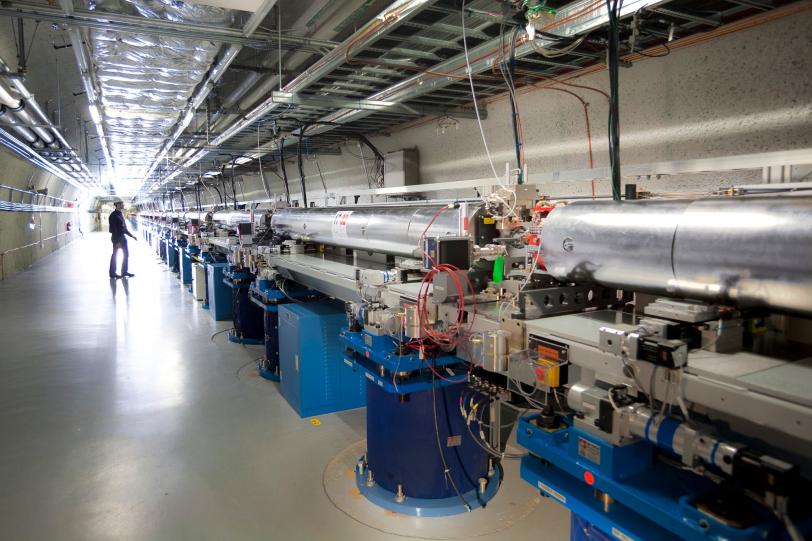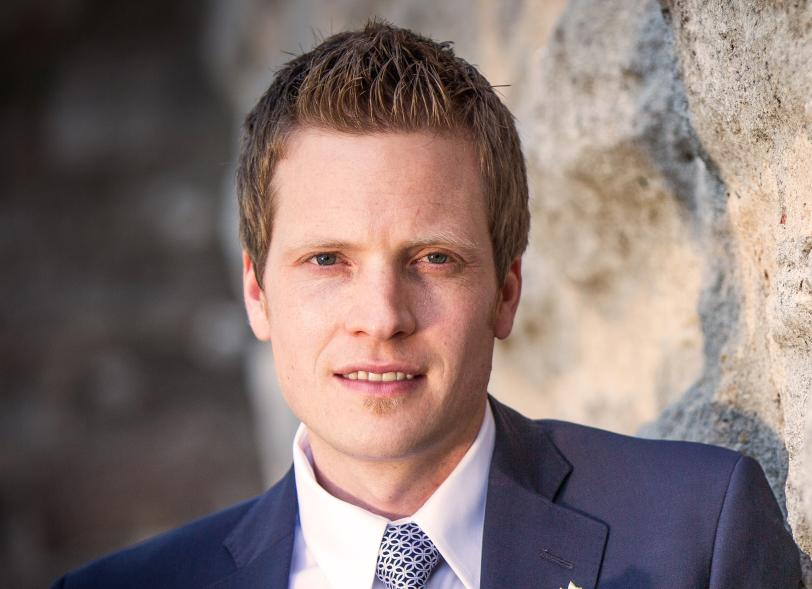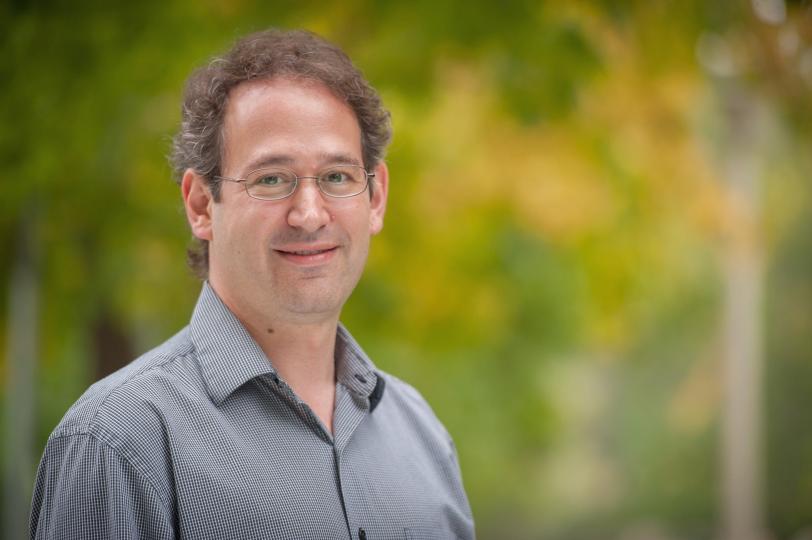Q&A: Researchers Explain a Strange High-Intensity Result at SLAC's X-ray Laser
In a first-of-its-kind experiment, scientists got a textbook-worthy result that may change the way matter is probed at X-ray free-electron lasers.
At extremely high intensities, X-rays stop behaving like the ones in your doctor’s office and begin interacting with matter in very different ways. This “nonlinear” X-ray behavior can only be seen at X-ray free-electron lasers. Recent experiments at the Department of Energy’s SLAC National Accelerator Laboratory have revealed a new, unexpected twist in that behavior that may be one for the textbooks and could change the way these powerful lasers probe matter. Here the leaders of the experimental team, David Reis of Stanford PULSE Institute and Matthias Fuchs of the University of Nebraska-Lincoln, describe the results, reported today in Nature Physics.
What was your experiment about?
In this experiment we investigated one of the most fundamental interactions between X-rays and matter – a process where two X-ray photons, or particles of light, hit an atom at the same time. In the process the two photons are converted into a single higher-energy X-ray photon. Under normal circumstances such a conversion does not happen, but we know from experiments using visible light that it can occur at extremely high light intensities.
This “nonlinear” behavior was discovered at optical wavelengths in the 1960s using a device that was new and revolutionary back then: a laser. Now it is being exploited in almost every laboratory that uses lasers, and even some readily available laser pointers are based on this technology. But until recently it could not be observed at X-ray wavelengths because they could not be produced at high enough intensities. Therefore, we had to use a completely new source of X-rays, a so-called X-ray free-electron laser or XFEL.
How are XFELs different?
XFELs are nothing like a typical laser; they are enormous machines more than half a mile long. They have only recently become operational after decades of development and only two exist worldwide – the Linac Coherent Light Source (LCLS) at SLAC and SACLA in Japan. These XFELs generate radiation with unprecedented properties. For our experiment we took advantage of the fact that they can produce extremely intense X-rays, more than a trillion times brighter than the sun.
Experiments at XFELs usually require a broad range of expertise. Our experimental team included researchers from SLAC, Stanford University, Bar-Ilan University in Israel and the University of Nebraska, Lincoln.
Tell us how the experiment worked.
During the experiment we generated an extremely intense X-ray beam by focusing the full output from the LCLS into a spot just 100 nanometers, or billionths of a meter, wide. That’s like focusing all the solar radiation that hits the Earth's surface into a spot the diameter of a human hair. To our knowledge this was the highest-intensity X-ray beam that had ever been used in an experiment. We directed that bright spot onto a small piece of beryllium metal, and collect the higher-energy photons that came out on a special pixelated X-ray detector.
We needed such extreme intensities to improve the chance that two photons would meet up at exactly the right place and time on one of the many atoms illuminated by the beam, and thus trigger a nonlinear interaction. Even so, the probability that this will occur on any given atom is less than the odds of winning the lottery.
The experiment was the very first investigation of this kind, so we were entering uncharted territory. But we were able to use theory and extrapolations from previous experiments to predict what we expected to see.
And is that what you saw?
No! What we expect to see when two X-ray photons hit a beryllium atom is that the energy of the two photons going in is equal to the energy of whatever comes back out. In this case the energy that comes out is shared between the single higher-energy photon that’s emitted and an electron that’s ejected from the atom.
But in the experiment, the energy of the higher-energy X-ray photons coming out of the interaction was much lower than expected, implying a much higher energy electron. This shows that the physics of the interaction seems to be much richer and even much more interesting than initially anticipated.
When we first proposed this experiment, a lot of people asked why we wanted to do it, since the expected results were already known. The fact that our measurements do not agree with the initially expected results shows the tremendous value of basic science. It is extremely exciting to work on investigations of such fundamental processes. As one anonymous peer reviewer wrote: “Ultimately, as this becomes better understood, it will appear in all textbooks on X-ray physics and nonlinear optics.”
What’s next?
This experiment is just the beginning. We will soon perform even more sophisticated experiments with better instrumentation to better understand this newly discovered phenomenon. If they confirm our new understanding of this fundamental process, it may have a significant impact on future experiments performed with high-intensity X-rays – including most XFEL experiments. It could also lead to novel ways of probing matter.
How so?
It has been shown that when X-rays scatter off the electrons in a solid, those electrons can behave almost as if they were free from the atoms that bind them, so you can’t tell what type of atom a given electron belongs to. However, in the nonlinear interactions we observed, the electrons behaved as if they were more tightly bound to their parent atoms. If the mechanism we think is responsible for this is correct, it gives you a whole new way to study materials with XFELs. The X-rays could tell you what kinds of atoms are in the material – what its chemical composition is – and at the same time tell you how the atoms are arranged. For the first time we would be able to get both types of information from a single experiment.
Citation: M. Fuchs et al, Nature Physics, 31 August 2015 (10.1038/nphys3452)
For questions or comments, contact the SLAC Office of Communications at communications@slac.stanford.edu.
SLAC is a multi-program laboratory exploring frontier questions in photon science, astrophysics, particle physics and accelerator research. Located in Menlo Park, Calif., SLAC is operated by Stanford University for the U.S. Department of Energy's Office of Science.
SLAC National Accelerator Laboratory is supported by the Office of Science of the U.S. Department of Energy. The Office of Science is the single largest supporter of basic research in the physical sciences in the United States, and is working to address some of the most pressing challenges of our time. For more information, please visit science.energy.gov.








